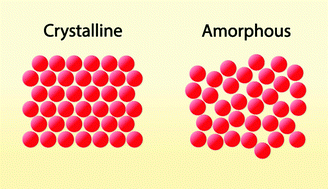Synthetic amorphous calcium phosphates (ACPs): preparation, structure, properties, and biomedical applications
Abstract
Amorphous calcium phosphates (ACPs) represent a metastable amorphous state of other calcium orthophosphates (abbreviated as CaPO4) possessing variable compositional but rather identical glass-like physical properties, in which there are neither translational nor orientational long-range orders of the atomic positions. In nature, ACPs of a biological origin are found in the calcified tissues of mammals, some parts of primitive organisms, as well as in the mammalian milk. Manmade ACPs can be synthesized in a laboratory by various methods including wet-chemical precipitation, in which they are the first solid phases, precipitated after a rapid mixing of aqueous solutions containing dissolved ions of Ca2+ and PO43− in sufficient amounts. Due to the amorphous nature, all types of synthetic ACPs appear to be thermodynamically unstable and, unless stored in dry conditions or doped by stabilizers, they tend to transform spontaneously to crystalline CaPO4, mainly to ones with an apatitic structure. This intrinsic metastability of the ACPs is of a great biological relevance. In particular, the initiating role that metastable ACPs play in matrix vesicle biomineralization raises their importance from a mere laboratory curiosity to that of a reasonable key intermediate in skeletal calcifications. In addition, synthetic ACPs appear to be very promising biomaterials both for manufacturing artificial bone grafts and for dental applications. In this review, the current knowledge on the occurrence, structural design, chemical composition, preparation, properties, and biomedical applications of the synthetic ACPs have been summarized.



 Please wait while we load your content...
Please wait while we load your content...